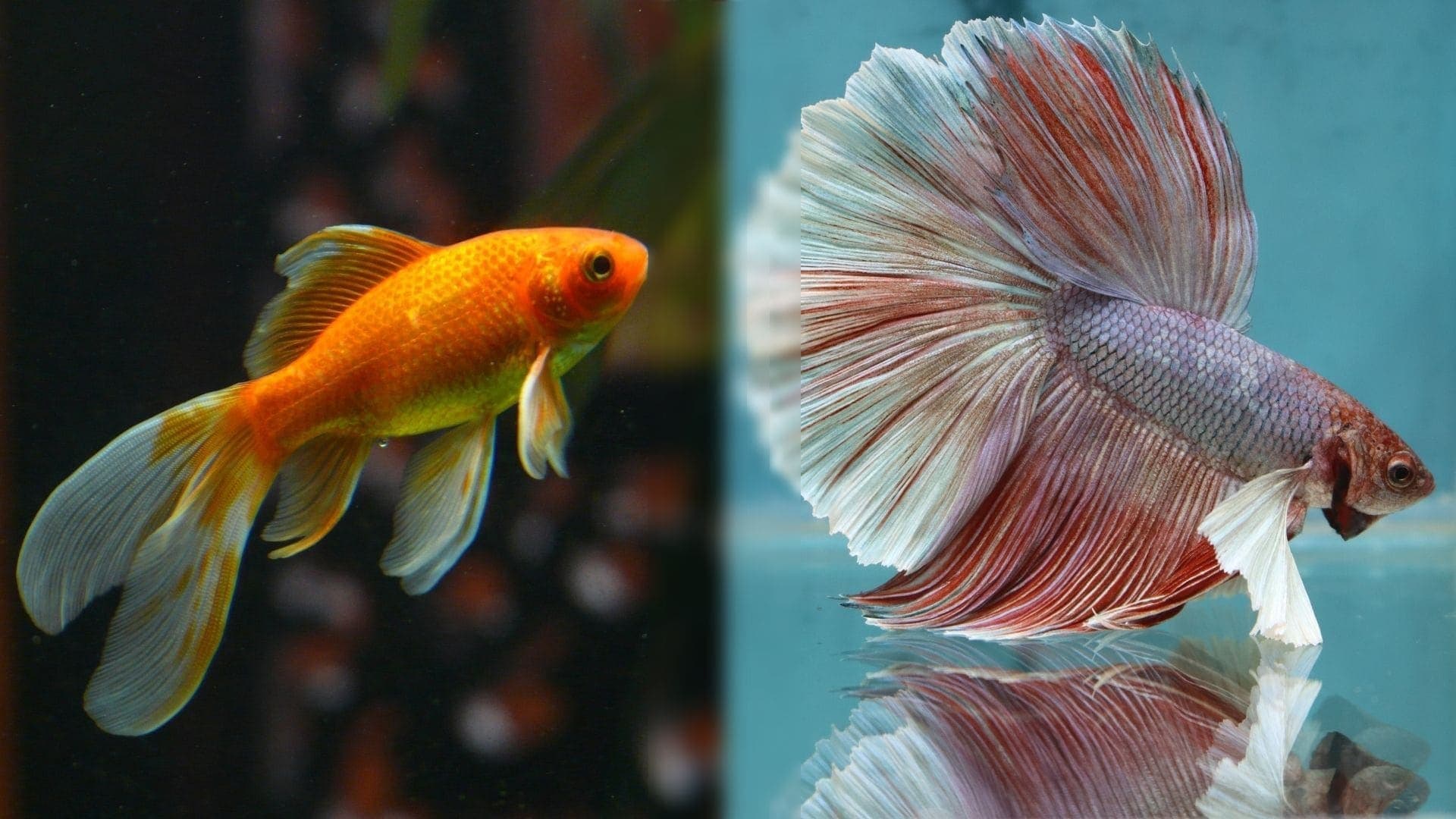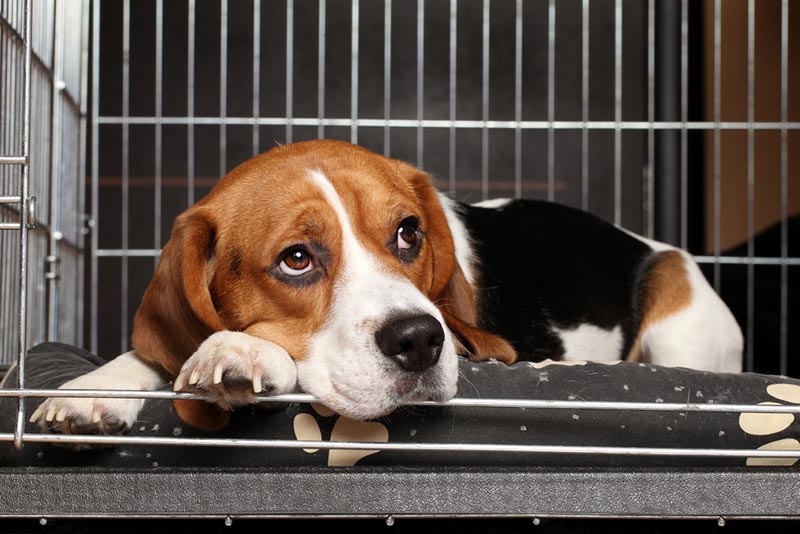11 Livestock Guardian Dog Breeds (LGD): Pictures, Facts & History
Updated on
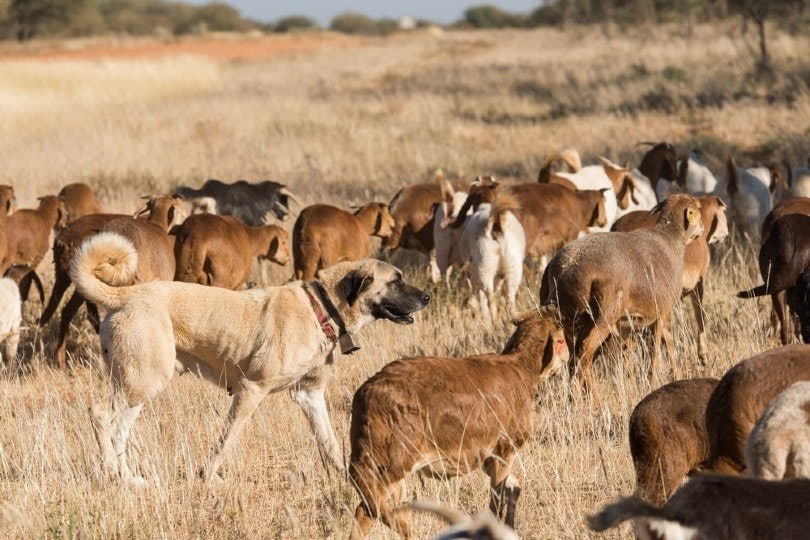
Whether you have livestock or not, a livestock guardian dog can make a great addition to your family. These dogs are often quite protective while also being laid back. Most are large, as they were traditionally used to protect livestock from bigger predators like wolves and bears.
As you might expect, these canines generally have similar traits and characteristics. However, each of them is still their own breed with their own needs and temperament. It’s important to understand the specifics of each breed before you consider adopting one.
Top 11 Livestock Guardian Dog Breeds
1. Anatolian Shepherd Dog
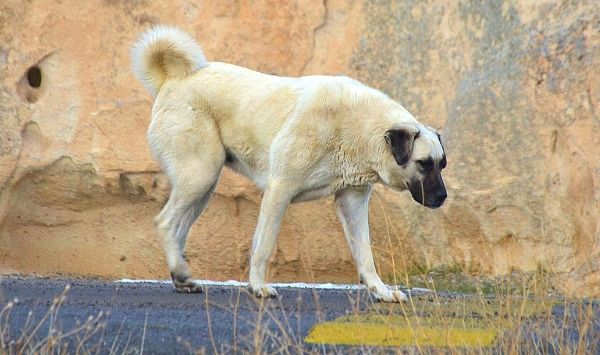
| Origin: | Turkey, specifically the Anatolian region |
| Lifespan: | 11 to 13 years |
| Height: | 28 to 32 inches |
This impressive livestock guardian dog originated from Turkey, which is how the breed got its name. This canine is very massive and was able to defend its charges against large predators, including bears. They were traditionally utilized to guard all manner of livestock, including sheep, goats, and cattle.
They aren’t nearly as common today as some other breeds. However, their protective temperament and independent mind play a large role in their lack of popularity. Still, they are one of the best guardian dogs around.
2. Great Pyrenees
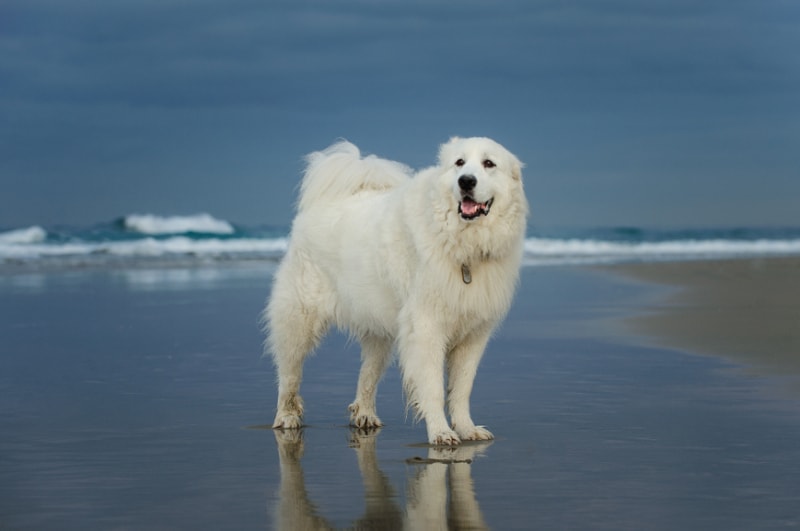
| Origin: | Pyrenees Mountains (on the border between France and Spain) |
| Lifespan: | 10 to 12 years |
| Height: | 25 to 32 inches |
You’ve probably heard of or even seen a Great Pyrenees. These massive dogs hail from the Pyrenees Mountains of France and Spain and are still used today to guard livestock of all sorts. Their thick, weather-proof coats allow them to stay outside in the elements in all conditions, and their gentle nature makes them a good fit for many different families.
They have a very calm demeanor, which sets them apart from some other livestock guardian dogs. They’re also known for their thick, white coats, which helped them blend in with sheep.
3. Komondor
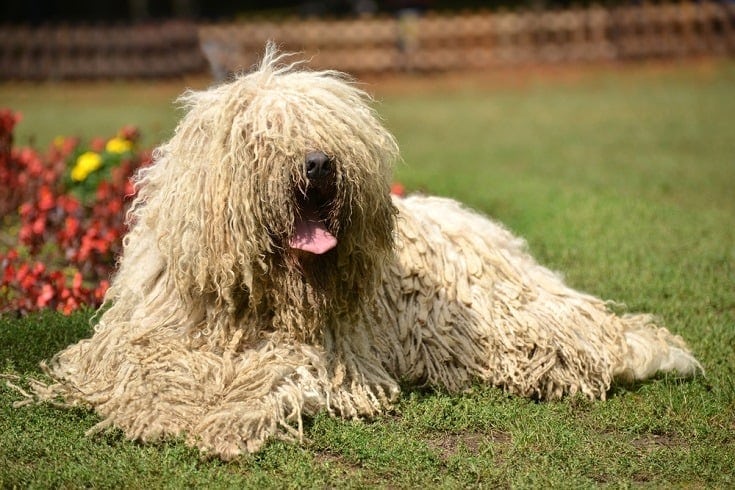
| Origin: | Hungary |
| Lifespan: | 10 to 12 years |
| Height: | 25.5 to 27.5 inches |
The Komondor is a Hungarian breed that has a unique corded coat, which makes them easy to identify. Their coat resembles dreadlocks when properly cared for. While their coat may be a bit high maintenance, they are dedicated guardians and known for their courage.
You don’t see them quite as much in the US, but they are still a common dog in their home region.
4. Maremma Sheepdog
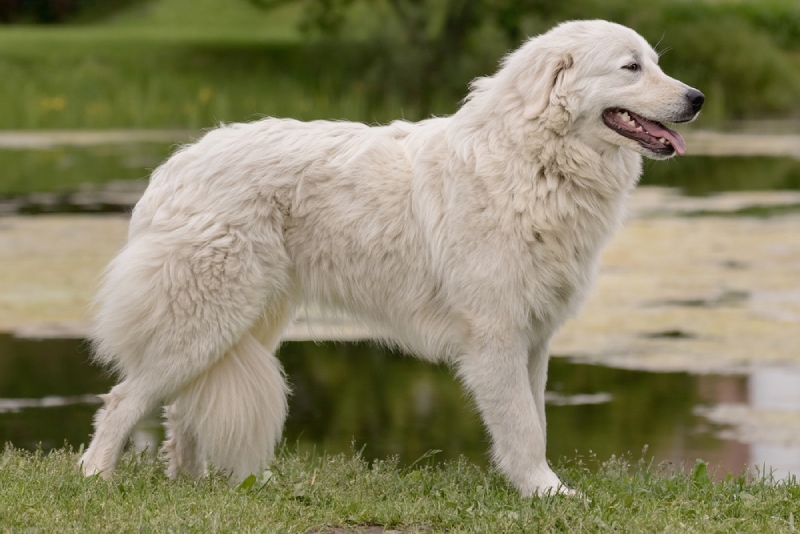
| Origin: | Italy, particularly the Maremma region |
| Lifespan: | 10 to 13 years |
| Height: | 24 to 29 inches |
Maremma Sheepdogs originate from Italy and are often employed to protect sheep from predators. They are characterized by their fluffy white coat and are known for their calm and confident demeanor. Their coat probably played a similar role to the Great Pyrenees’s coat by helping them blend in with sheep.
These dogs are extremely protective and will form strong bonds with their flock. They can also bond strongly with their family if kept as a companion animal. However, they are far more protective than some other dogs on this list, which can make them harder to control.
5. Kuvasz
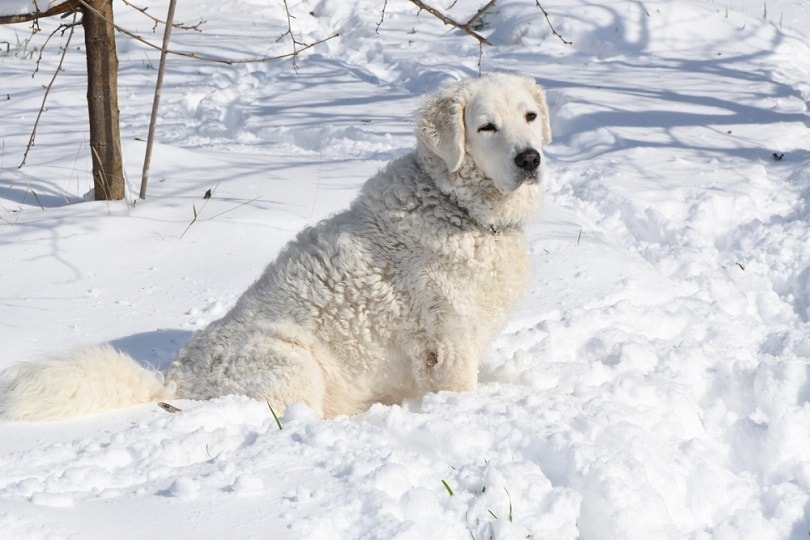
| Origin: | Hungary |
| Lifespan: | 10 to 12 years |
| Height: | 26 to 30 inches |
We’ll forgive you if you’ve never heard of the Kuvasz. This interesting breed originates from Hungary and is known for its intelligence. They were bred to guard livestock and make split-second decisions on their own, so they tend to be very independently minded. They don’t take well to training, as you might expect.
These dogs can be gentle with their family, but they are often aloof and untrusting of strangers.
6. Tibetan Mastiff
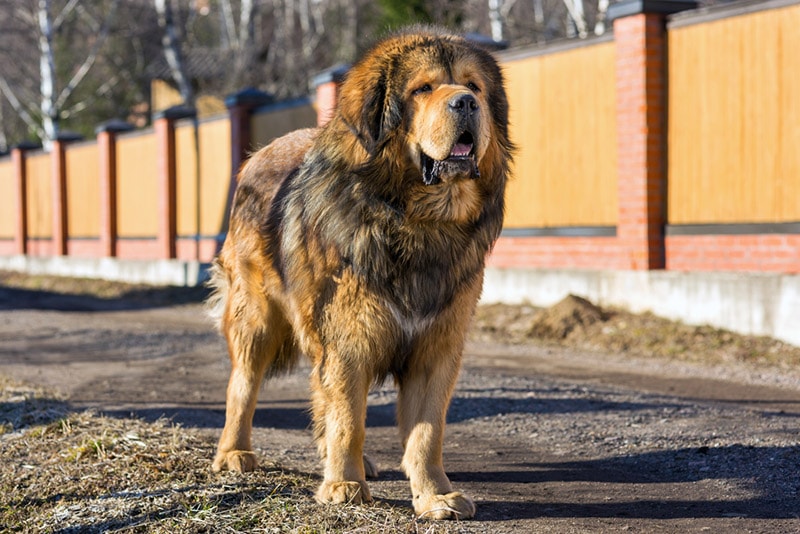
| Origin: | Tibet |
| Lifespan: | 10 to 14 years |
| Height: | 24 to 26 inches |
The Tibetan Mastiff is one of the few livestock guardian dogs that is commonly kept as a companion animal today. They come from the Himalayan region, particularly around Tibet. They’re very powerful, majestic dogs with a strong protective instinct. They were known to fight off very large predators, including snow leopards and wolves.
They’re extremely loyal to their families and tend to be more on the independent side. They can make good family pets for the right person, though.
7. Spanish Mastiff
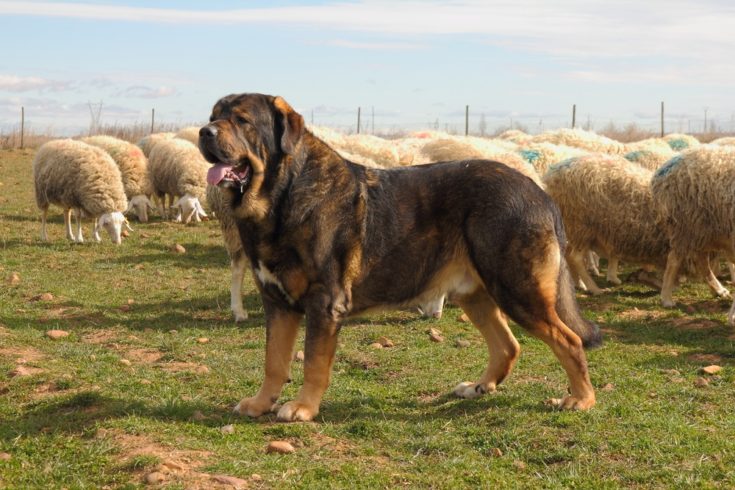
| Origin: | Spain |
| Lifespan: | 10 to 12 years |
| Height: | 28 to 35 inches |
Mastiffs are known for their protective instincts, and the Spanish Mastiff is no different. They are one of the largest and heaviest dog breeds, originating from Spain. Their sheer presence scares off many predators, but they are quite calm and gentle. Today, these dogs are often bred for their calm attitude, which makes them loved companions.
Despite being laid back, they are extremely territorial. Therefore, they do best in one-dog households and may not do well with strangers coming into their space.
8. Kangal
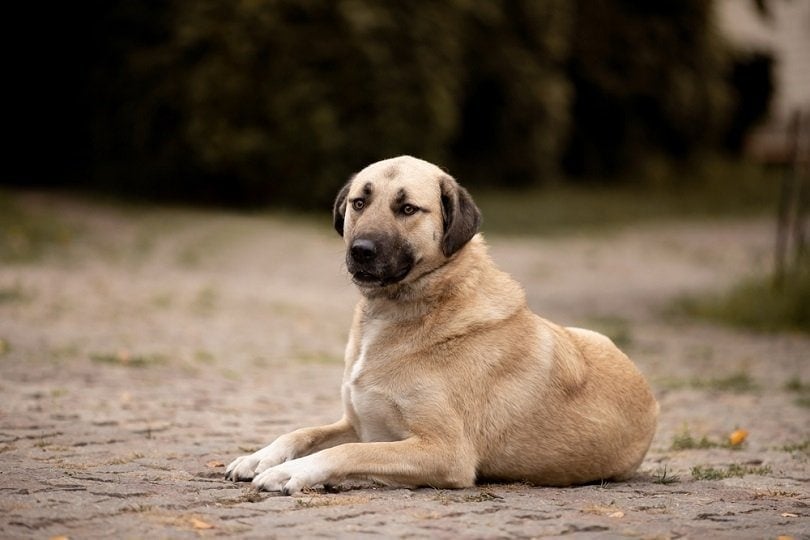
| Origin: | Turkey, particularly the Sivas region |
| Lifespan: | 12 to 15 years |
| Height: | 28 to 34 inches |
Kangal dogs are native to Turkey. Unlike most other livestock guardian dogs, this breed is known for their agility. They’re also very courageous, allowing them to protect their charges from massive predators. They’re a popular choice among Turkish shepherds to this day. They are loyal and adaptable to many different climates, allowing them to work well in many different areas around the world.
9. Akbash Dog
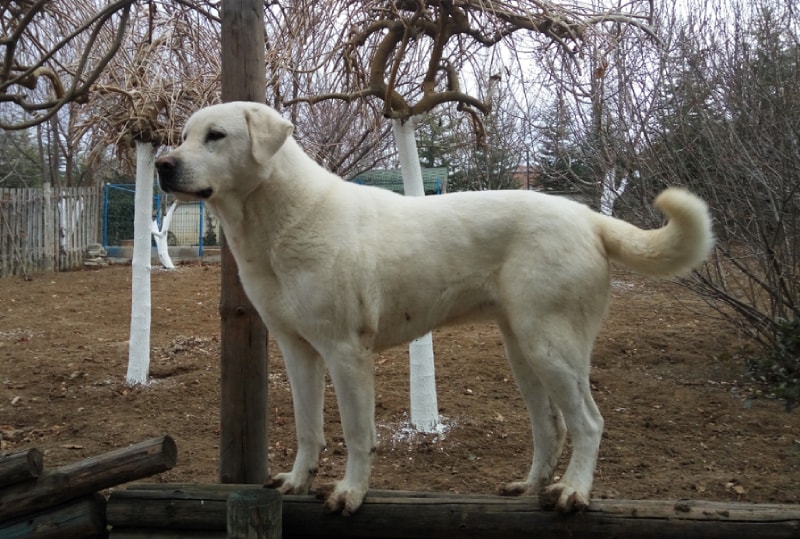
| Origin: | Turkey |
| Lifespan: | 10 to 12 years |
| Height: | 28 to 34 inches |
Also originating from Turkey, the Akbash dogs are determined and independent livestock guardians. They bond closely with their owners and will defend them to their last breath. Their white coat looks very similar to many other guardian dogs.
These dogs are very effective protectors. However, they can be a bit too independent and protective for most modern families. It’s important to know what you’re getting before you adopt one of these dogs.
10. Sarplaninac
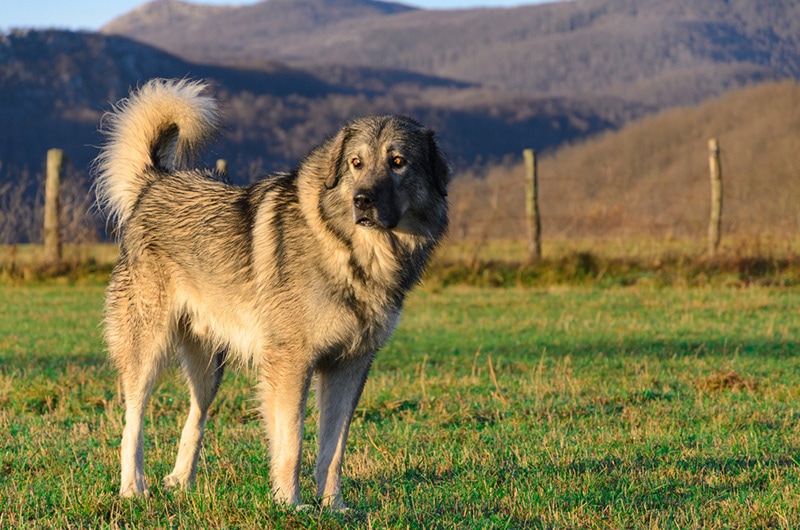
| Origin: | The Balkans (with their name derived from the Šar Mountains in the former Yugoslavia) |
| Lifespan: | 10 to 12 years |
| Height: | 22 to 24 inches |
Also called the Yugoslavian Shepherd Dog, this canine comes from the Balkan region. Like most livestock guardian dogs, they protected many kinds of livestock from wolves and bears. As you might imagine, they are very large and imposing. Sometimes, their presence alone was enough to keep these predators away.
They’re very courageous and extremely territorial. Their protective instincts are some of the strongest, which is one reason they never become popular companion animals.
11. Polish Tatra Sheepdogs
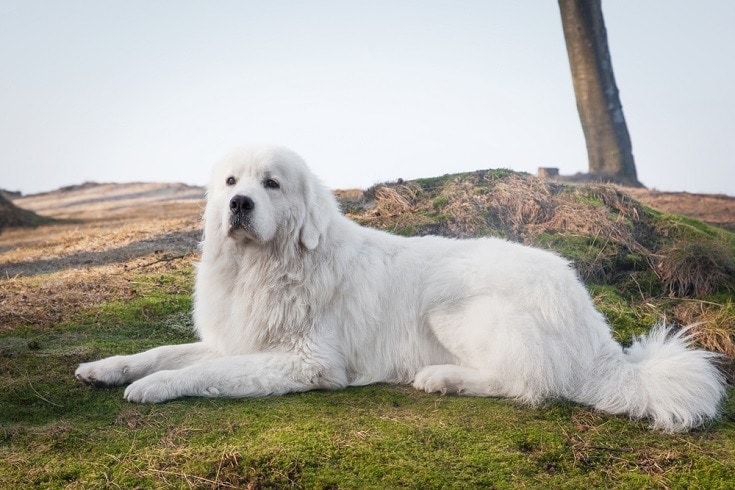
| Origin: | Poland |
| Lifespan: | 10 to 12 years |
| Height: | 24 to 30 inches |
This Polish breed has a thick, white coat that looks a lot like the coat of many other livestock guardian dogs. They are known for their excellent guarding abilities while still being calm and patient. They can be fierce when they need to be, though. They are sometimes kept as companion animals, though they’re still rare outside of their home range.
These dogs were originally bred to live in mountainous, rugged climates. Therefore, they are very adaptable and able to withstand tougher weather conditions.
Conclusion
There are just about as many livestock guardian dog breeds as there are regions on the planet. Dogs proved to be very effective protectors of livestock, and many different cultures developed their own breeds to help them protect their goats, cattle, and sheep. Some of these breeds are common companion animals today, while others are still obscure and mostly found in their region of origin.
Featured Image Credit: Bobby Bradley, Shutterstock









